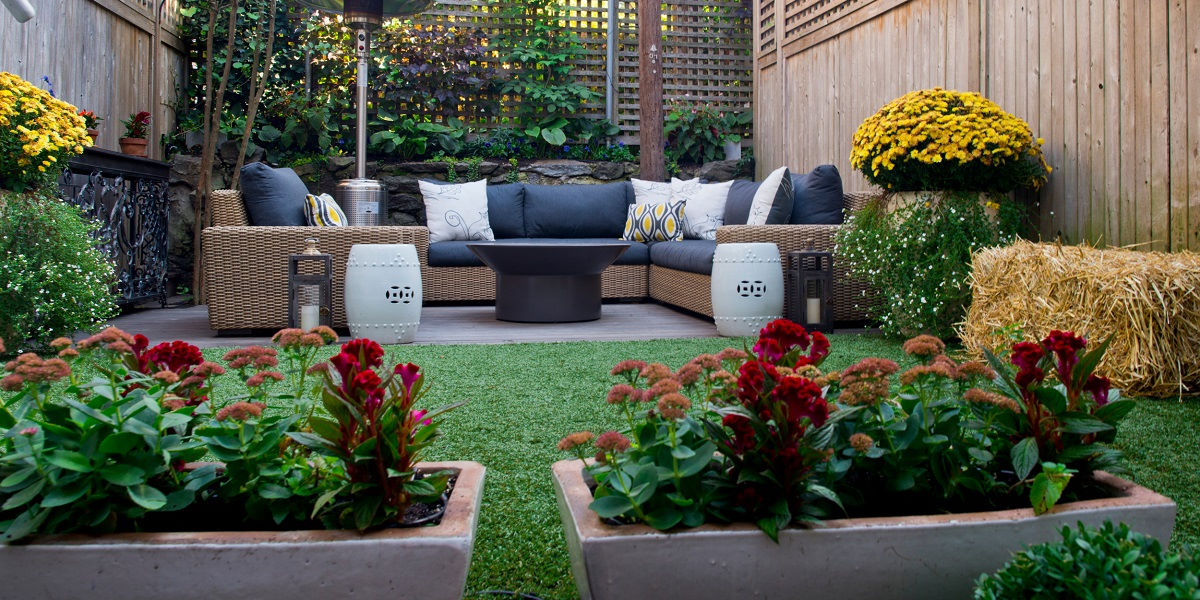Summer is the perfect time to make the most of your outdoor space. Whether you have a sprawling backyard, a neat terrace, or a small balcony, you can use landscape design to create a beautiful atmosphere that you can enjoy with family and friends. Landscape design focuses on enhancing the aesthetic and functional qualities of outdoor spaces, and it allows you to customize your outdoor space to reflect your individual style and preferences. In this article, we will discuss some of the key tips for maximizing your outdoor space with landscape design. You’ll find advice on how to select the right plants, rocks, and features for your outdoor landscape, as well as how to choose the right colors, textures, and materials. With these tips and tricks, you can create a vibrant and inviting outdoor space that you and your family can enjoy all summer long.
1. Consider Your Outdoor Activity Needs
When it comes to maximizing your outdoor space, the first step is to consider your outdoor activity needs. Think about the activities that you and your family want to do in your outdoor space. If you want a swimming pool, you will need to work with a pool designer or an architect to determine the most suitable size, shape, and location. If you are looking for a garden design, consider the type of plants and trees you want and where they will go in the garden. You should also consider the amount of space available and whether you need to hire a designer or an architect to help with your garden design. By taking the time to think about your outdoor activity needs, you can make the most of your outdoor spaces.
2. Design a Functional Landscape
Designing a functional landscape is a key part of maximizing outdoor space. Garden design, swimming pools, outdoor spaces, and other outdoor features should be considered when deciding how to make the most of the area. Working with a qualified designer or architect is essential in order to ensure the landscape design is suitable and fulfills its purpose. When designing a landscape, careful attention must be paid to the type of plants and trees used and their positioning, as well as to any architectural elements such as fountains, patios, and pathways. Furthermore, the arrangement of the various elements should be thoughtfully considered to ensure they come together to create a cohesive and attractive design.
3. Incorporate Appropriate Plantings
When it comes to garden design, incorporating the right kind of plantings can go a long way towards maximizing your outdoor space. Strategic plantings, such as trees and shrubs, can not only add beauty to your garden, but also provide a measure of privacy and shade for your swimming pools and other outdoor spaces. When selecting plants, be sure to consult with professional landscape designers or architects to ensure that the plants selected are appropriate for the conditions of your garden. Doing so will ensure your outdoor space is optimized to the fullest, while also providing an aesthetically pleasing and functional space.
4. Make Use of Pathways and Walkways
Maximizing your outdoor space can be achieved with the help of pathways and walkways. Whether you are looking to create a garden design, install a swimming pool, or create a usable outdoor space, pathways and walkways can provide a practical and attractive solution. Designed and installed by experienced garden designers and architects, pathways and walkways can help define your outdoor space and provide a practical pathway between areas of your garden. By using materials like natural stone, brick, and concrete, you can create pathways and walkways that are both attractive and hard wearing.
5. Utilize Proper Soil Preparation
Utilize proper soil preparation for any landscaping project. Your garden designer or architect should be able to help you determine what type of soil you need for your project. There are several types of soil for various landscape designs, such as swimming pools, outdoor spaces, and more. Without proper soil preparation, the project can be ruined. It’s important to do your research and communicate with your designer or architect to ensure you have the right soil for your project.
6. Use Low-Maintenance Plantings
When it comes to garden design, designers and architects often recommend using low-maintenance plantings to maximize the use of outdoor spaces. These plantings can be used near swimming pools, decks, patios, and other leisure areas, and require minimal effort to maintain. Low-maintenance plantings also add to the aesthetic of any outdoor space, as they come in many varieties, colors, and sizes. Additionally, low-maintenance plantings are often suited to local climates, meaning they will be able to thrive without too much care.
7. Incorporate Appropriate Drainage
One of the most important aspects of garden design, whether you’re creating a garden from scratch, renovating an existing one, or adding a swimming pool, is incorporating appropriate drainage. Without proper drainage, outdoor spaces can become waterlogged and unhealthy for plants. Professional designers and architects are trained to look for drainage issues and suggest suitable solutions that will not only keep outdoor spaces looking their best but also be cost-effective and long-lasting.
8. Consider Lighting and Electrical Outlets
Lighting and electrical outlets are essential elements of garden design. When designing your outdoor space, it is important to consider the type of lighting and outlets you will need. Spotlights, floodlights and downlights are just a few options to consider. Swimming pools, ponds, and other water features should also have adequate lighting and electrical outlets. Designers and architects may also suggest installing low-voltage lighting, which is abundant in outdoor spaces. Additionally, it is important to ensure your electrical outlets are weatherproofed and safe for outdoor use. This is essential for the safety of your family and guests.
9. Select Durable and Sustainable Materials
When it comes to garden design, swimming pools, and other outdoor spaces, durable and sustainable materials should be used to ensure your landscape remains beautiful and functional for many years to come. This means selecting materials that can withstand weather, temperature changes, and other environmental elements. Architects and designers are a great resource when it comes to selecting the best materials for your outdoor space. They can provide valuable input on the durability, sustainability, and cost-effectiveness of any materials you may be considering.
10. Hire an Experienced Landscape Designer to Ensure Your Project’s Success
As you look to maximize your outdoor space, one of the most important considerations is to hire an experienced landscape designer. Landscape designers can help bring your garden design ideas to life and ensure that your project is successful. They can provide advice on swimming pools, pathways, and other features you may want to include in your outdoor space. Furthermore, experienced landscape designers can work with architects to ensure that your project is completed with your vision in mind. Investing in a landscape designer is a great way to ensure that your outdoor space is optimized.
All in all, the landscape design process is an enjoyable one that can result in outdoor spaces you’ll enjoy for years to come. By creating a plan, researching materials and plants, and choosing an appropriate design, you can maximize your outdoor space to create a place of beauty and comfort. With these tips, you can create a landscape design that suits your lifestyle, budget, and environment.

